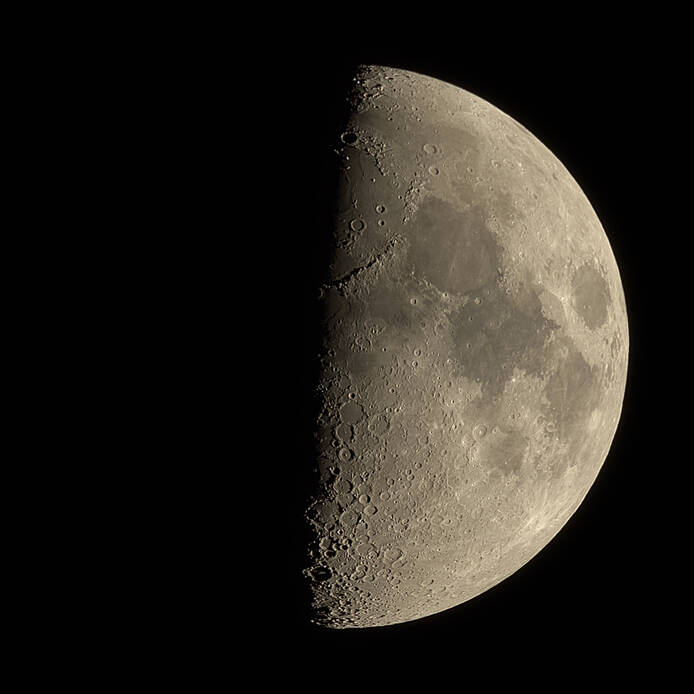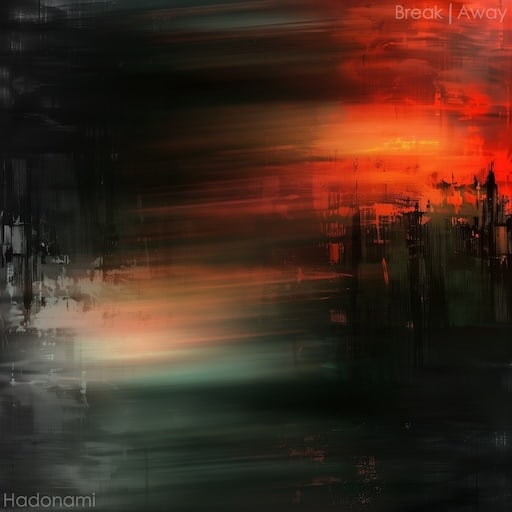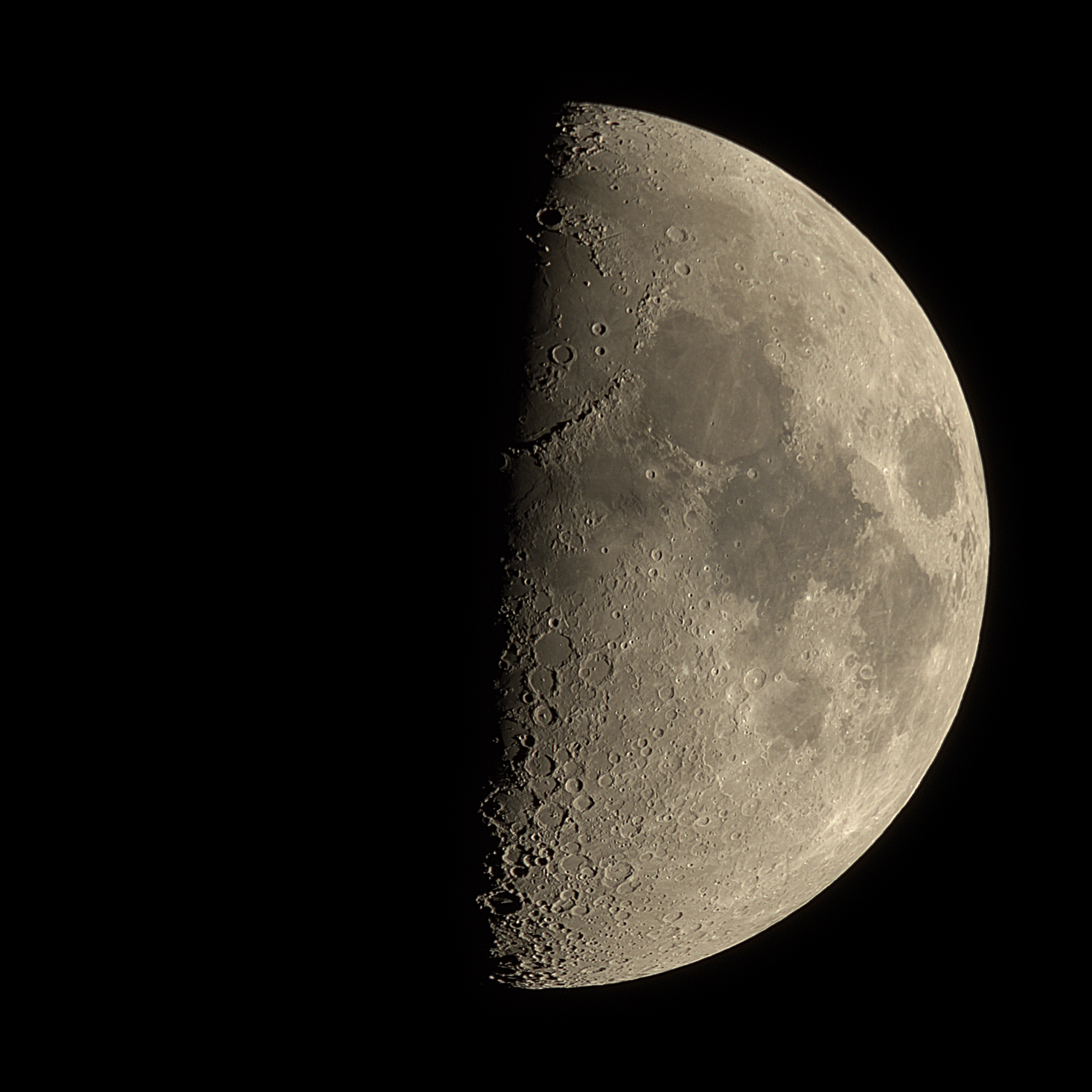
September 3rd 2022 Moon
 We had a half Moon and clear skies on the evening of September 3rd, and the Moon was in a good position to be photographed from the deck, so I took a bunch of photos.
We had a half Moon and clear skies on the evening of September 3rd, and the Moon was in a good position to be photographed from the deck, so I took a bunch of photos.
Unlike my previous attempts at photographing the Moon, I used a tripod. I didn't have my star tracker with me so I had to manually adjust the tripod every few shots.
I'm happy with the results. Compared to my previous photo (from this February post) I ended up with a photo with a lot more contrast and detail.
Final Image
Here is the result of 24 stacked frames shot on my Canon EOS R6, with the Sigma 150-600mm Contemporary with 1.4x, at 840mm, using f/16 and ISO 640 at 1/80th of a second (click to see full-size):
The Exposures
I first took 70 frames at -2/3 EV exposure bias, to try to get highlights on the exposure histograms looking safe. To take the shots, I moved the camera/ballhead into position, then selected a point on the Moon's surface to autofocus on. Then I used the camera's multi-exposure setting to take about 10 frames, around 2 seconds apart. Since I didn't have my intervalometer, after putting the shutter button the camera was still moving a bit for the first exposure or two, usually, of each set of shots. After about 10 shots I'd have to re-adjust the ballhead to get the Moon back into frame. As the shadow side of the Moon approached the initial focus/metering area, I could see the exposure length getting longer. Perhaps I'll have to learn more about my camera settings to try to keep the exposure from being auto-readjusted by the camera.
After quickly reviewing those exposures on the back of the camera, I thought I'd better take some more shots at -1 EV of exposure bias, to push the histogram even more to the left. I took 62 frames at -1 EV. I believe for this second group of exposures I took fewer exposures (maybe 6 or 8 at a time, instead of 10) for each ballhead adjustment, which meant the camera would have had a more consistent exposure from the first shot to the last in each set of exposures.
The Processing
I first used darktable 4.0, with the "filmic rgb" module turned off, to crop and convert the frames from Canon CR3 files to TIFF. I think turning off "filmic rgb" was a major reason this Moon shot looks much less over-exposed, without bloomy-looking highlights, compared to the previous Moon shot linked above.
Next, PIPP was used to center the Moon in each frame, and then I stacked with AutoStakkert! 3. I used RegiStax 6 to sharpen the stacked result, and Lightroom Classic for some final sharpening and adjustments.
For the -2/3 EV stack, I used the top 28 of 70 frames (41%). I manually drew alignment points in AutoStakkert.
For the -1 EV stack, I used the top 24 of 62 frames (39%). Again, I manually drew alignment points in AutoStakkert.
I also tried stacking all 132 frames, using the best 23 frames (18%) for one stack and the best 11 frames (9%) for another.
For all of the above, I tried both AutoStakkert's 1.5x drizzle algorithm and 3x drizzle. The 3x drizzle didn't seem to make any difference. Perhaps I needed a lot more frames for the drizzle algorithm to add any real detail in this case, and I probably could have used no drizzle at all.
By far the best result was the -1 EV exposure bias stack, so that stack of 24 frames is shown above. The other stacks had lots of strange artifacts and mis-shapen/blurry areas, which I think were generated by AutoStakkert but I'm not sure if it was user error, low-quality images, using too many poor-quality images, or a software problem.



